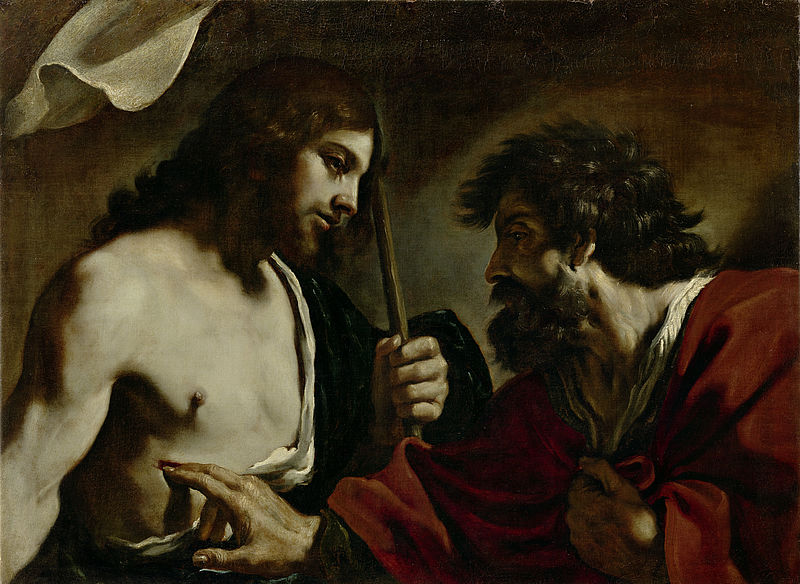The Incredulity of Saint Thomas
Guercino, eigentl./in reality Giovanni Francesco Barbieri (1591 - 1666)
Framesize 94.50 x 128.50 x 6.60 cm
Guercino was a tireless worker with a large workshop and a sure hand for contours and colours. At the beginning of his career, his figures, such as the Doubting Thomas, are influenced by Caravaggio’s realism. He used an intense, earthy, warm colouration with soft transitions and a flowing style. The drama of the scene is emphasised by light and shade contrasts and curtailing of the protagonists. In this painting, the artist concentrates on the two main characters. It is a version among several on the same subject, harking back to a work from 1621, now shown at the National Gallery in London (inv. no. NG3216), with three Apostles as witnesses in the background.
Christ stands with bared upper body and holding the flag of victory; Thomas approaches him from the right, placing his fingers in the wound in Christ’s side. Guercino bases his composition on the Gospel according to St. John, which tells of the Apostle’s doubts about the reappearance of Christ: “Except I shall [...] thrust my hand into his side, I will not believe.” (John 20, 24–29) Eight days later it came to pass, what Thomas had demanded of his God.
The face and upper body of the doubter are in shadow, his right hand, well-defined muscular neck and left shoulder stand out against the dark area. The silhouette of his head contrasts with the brown shades of the undefined background.
We know two things about Guercino, which also apply to other artists: commissioned works were sometimes copied in his workshop before delivery, and the fee was usually agreed per figure.
HABERSATTER Thomas: Guercino, in reality Giovanni Francesco Barbieri, The Incredulity of Saint Thomas, in: DUCKE Astrid, HABERSATTER Thomas, OEHRING Erika: Masterworks. Residenzgalerie Salzburg. Salzburg 2015, p. 16


